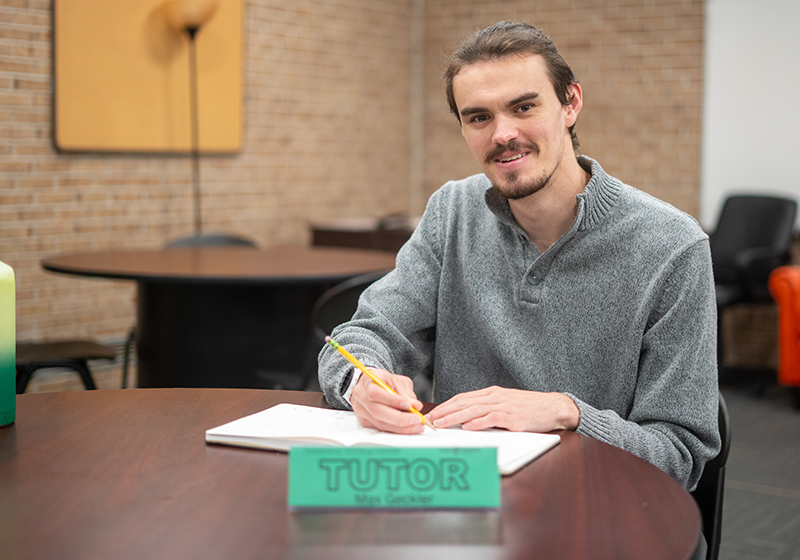
A summer in review at the May Wildlife Rehabilitation Center
The Lees-McRae College May Wildlife Rehabilitation Center bustles with activity throughout the year. From an onslaught of baby birds, squirrels, bunnies, and deer in spring to new students beginning their adventure as rehabbers-in-training in the fall, there is never a dull moment for Wildlife Rehabilitation students and faculty inside the center’s walls.
One of the most exciting and dynamic times of year, however, might just be the summer, when students step up and take a greater leadership position in their clinicals and animal populations are thriving. Also, for the first time this year, veterinary students from North Carolina State University (NCSU) visited the center as part of their clinical rotations.
“Summer clinical is extremely different from a typical course mainly because it is based on your hard work, not on tests or assignments. How you treat the animals and others, what you know and can do, if you keep up with your work, and how efficient you are, are all factors that go into your grade,” Kayla Barber, a senior Wildlife Biology major who is specializing in Wildlife Rehabilitation, said. “Summers at the center are much more hectic than the school year, mainly because of the amount of patients and students. We typically have more patients because it is baby season for a lot of animals.”
Summer 2024 was no different, and students, rehabbers, and veterinarians stayed busy caring for more than 1,200 patients throughout the season. Twittering songbirds made up the largest portion of the season’s patients, with chimney swifts, Carolina wrens, and eastern phoebes at the forefront. The center saw nearly 300 intakes across the three species. The largest single-species patient group, however, was the Virginia Opossum, with nearly 200 intakes.
Each of these patients has an interesting story and offers students a valuable learning experience about different injuries, diseases, and varieties of care. For Barber, one of the most interesting patients of the season was a crow who came into the center with an advanced case of avian pox that had caused a large lesion that covered most of the bird’s eye.
Throughout the season, Barber participated in and observed the crow’s care, until the crow was released.
“It was great to see how the pox improved, and the lesion withered away. I saw his pox at multiple different stages while he was in our care, and it was really cool to see something visual like that since most of our pox patients were not that severe,” Barber said. “Getting him to release was great because he had been in our care for so long.”
 (Photos courtesy of Kayla Barber)
(Photos courtesy of Kayla Barber)
In addition to Lees-McRae students gaining clinical experience at the May Wildlife Rehabilitation Center this summer, NCSU veterinary students also completed their clinical rotations at the center for the first time.
Throughout their fourth year in the program, NCSU veterinary students are required to complete a series of clinical rotations at locations throughout the state that introduce them to all varieties of wildlife and animal medicine. Fourth-year veterinary student Sarah Loesch, who is earning a zoological focus, was excited when she found out that the college’s rehabilitation center became an option for clinical rotations.
Prior to veterinary school, Loesch completed two summer internships at other wildlife rehabilitation centers, one at the North Carolina Zoo in Asheboro and another at the New Mexico Wildlife Center. In addition to visiting the North Carolina mountains for the first time, Loesch said she was particularly interested in completing a rotation at Lees-McRae to compare different rehabilitation centers and gain a more well-rounded understanding of the various strategies and operating procedures that different facilities take.
“The biggest thing was how much larger the program was at the May Wildlife Rehabilitation Center. There were so many more students and so many more learning opportunities,” Loesch said. “There were a lot of hands-on opportunities that otherwise I wouldn’t get a whole lot of. I was able to do pinning, which is essentially fixing fractures in bird wings by putting a metal pin through two bones that stabilizes those and allows them to heal. Being able to do that pinning was really cool. Running anesthesia on wildlife species is a little more delicate, so that was definitely something you need to watch out for, and it was really great experience.”
Loesch’s favorite patients throughout the summer were bats—which she said many centers do not intake due to risk of rabies—and deer fawns—which also tend to be a rare intake at rehabilitation centers that often don’t have the room to care for larger patients.
As another summer at the May Wildlife Rehabilitation Center winds down, students from both Lees-McRae and NCSU look back on a season not only of academic and personal growth through experience, but also a season of giving back to the environment. With nearly 500 patient releases throughout the summer, the impact of the hard work is easy to see.
 (Photo courtesy of Kayla Barber)
(Photo courtesy of Kayla Barber)


